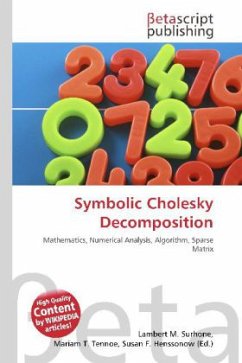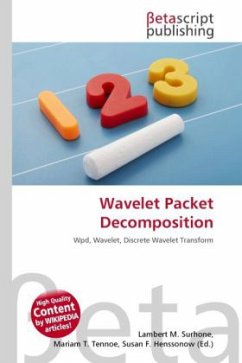
Open Book Decomposition
Versandkostenfrei!
Versandfertig in 6-10 Tagen
19,99 €
inkl. MwSt.

PAYBACK Punkte
10 °P sammeln!
Please note that the content of this book primarily consists of articles available from Wikipedia or other free sources online. In mathematics, an open book decomposition (or simply an open book) is a decomposition of a closed oriented 3-manifold M into a union of surfaces (necessarily with boundary) and solid tori. Open books have relevance to contact geometry, with a famous theorem of Emmanuel Giroux (given below) that shows that contact geometry can be studied from an entirely topological viewpoint.When is an oriented compact surface with n boundary components and : is a homeomorphism which...
Please note that the content of this book primarily consists of articles available from Wikipedia or other free sources online. In mathematics, an open book decomposition (or simply an open book) is a decomposition of a closed oriented 3-manifold M into a union of surfaces (necessarily with boundary) and solid tori. Open books have relevance to contact geometry, with a famous theorem of Emmanuel Giroux (given below) that shows that contact geometry can be studied from an entirely topological viewpoint.When is an oriented compact surface with n boundary components and : is a homeomorphism which is the identity near the boundary, we can construct an open book by first forming the mapping torus . Since is the identity on , is the trivial circle bundle over a union of circles, that is, a union of tori. To complete the construction, solid tori are glued to fill in the boundary tori so that each circle S1 × {p} S1× D2 is identified with the boundary of a page. In this case, the binding is the collection of n cores S1×{q} of the n solid tori glued into the mapping torus, for arbitrarily chosen q D2. It is known that any open book can be constructed this way.












